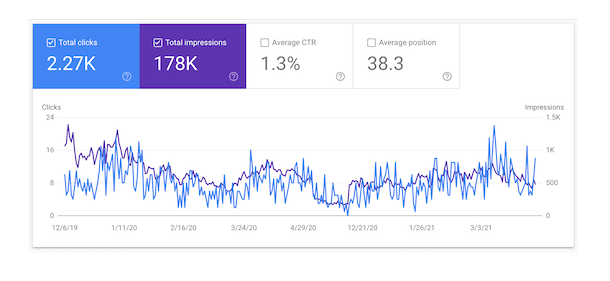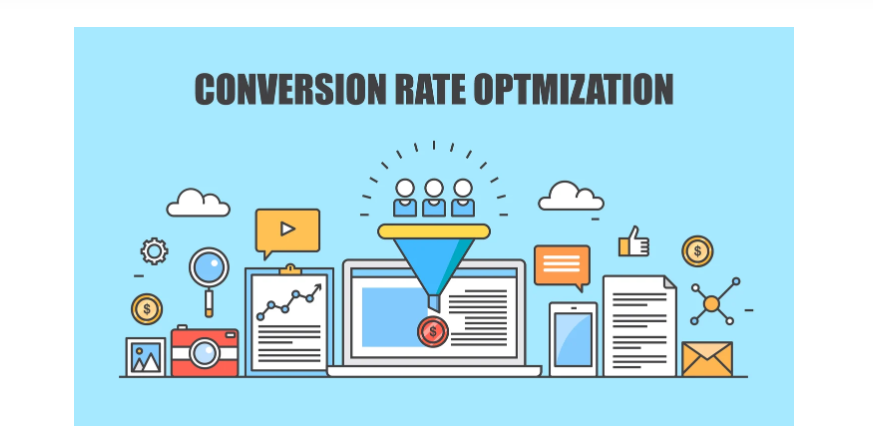Introduction
At the heart of every successful online venture lies a meticulously crafted digital marketing blueprint. This blueprint serves as the cornerstone of strategic planning, guiding businesses towards their goals with precision and purpose.
In the competitive landscape of digital marketing, having a strategic plan is not just advantageous—it’s essential for achieving online success. Join us as we delve into the significance of a digital marketing blueprint, explore its role in driving online growth, and uncover the key strategies for building a formidable online empire.
Understanding Your Audience
In the realm of digital marketing, success begins with a deep understanding of your audience. By comprehensively grasping who your audience is, what they need, and how they behave online, you can tailor your marketing efforts effectively to resonate with them.
Conducting Market Research
Before diving into any marketing campaign, it’s crucial to conduct thorough market research. This involves gathering data about your industry, competitors, and target audience.
By analyzing market trends, competitor strategies, and consumer preferences, you can uncover valuable insights that inform your marketing decisions.

Defining Target Demographics
Once you’ve collected market research data, the next step is to define your target demographics. This involves identifying the specific groups of people who are most likely to be interested in your products or services.
Consider factors such as age, gender, location, income level, interests, and online behavior to create detailed buyer personas.

Analyzing Audience Behavior and Preferences
Understanding how your audience behaves online and what they prefer is essential for crafting targeted marketing messages. Utilize tools like Google Analytics, social media insights, and customer surveys to gather data on audience engagement, website traffic patterns, and content preferences.
By analyzing this information, you can tailor your marketing strategies to better meet the needs and preferences of your audience.

Understanding your audience is not just about gathering data—it’s about gaining insights that drive actionable decisions.
By conducting thorough market research, defining clear target demographics, and analyzing audience behavior and preferences, you can create marketing campaigns that resonate with your audience on a deeper level.
Crafting a Comprehensive Digital Marketing Strategy
In the dynamic landscape of digital marketing, crafting a comprehensive strategy is the cornerstone of success. By integrating various tactics and channels, businesses can effectively reach their target audience, drive engagement, and achieve their marketing goals.
Search Engine Optimization (SEO)
Search Engine Optimization (SEO) lies at the core of any digital marketing strategy. It involves optimizing your website to rank higher in search engine results pages (SERPs), thereby increasing visibility and organic traffic. Here are key components of an effective SEO strategy:
- Keyword Research and Analysis: Conducting thorough keyword research to identify relevant terms and phrases that your target audience is searching for. Analyzing keyword competition, search volume, and user intent helps in selecting the most valuable keywords for optimization.
- On-Page Optimization: Optimizing on-page elements such as title tags, meta descriptions, headers, and content to align with target keywords and improve search engine visibility.
- Off-Page Optimization: Building backlinks from reputable websites through strategies like guest blogging, influencer outreach, and social media engagement. Backlinks signal to search engines that your website is authoritative and trustworthy, leading to higher rankings.

Content Marketing
Content Marketing is another pivotal component of a digital marketing strategy, focusing on creating and distributing valuable, relevant, and consistent content to attract and retain a clearly defined audience. Here’s how to craft an effective content marketing strategy:
- Developing a Content Calendar: Planning and organizing content creation efforts by outlining topics, deadlines, and distribution channels in a content calendar. This ensures consistency and alignment with overall marketing objectives.
- Creating Valuable and Engaging Content: Producing high-quality content that addresses the needs, interests, and pain points of your target audience. Content formats may include blog posts, videos, infographics, eBooks, and more, catering to diverse preferences and consumption habits.
- Distributing Content Across Various Channels: Amplifying the reach of your content by distributing it across multiple channels such as your blog, social media platforms, email newsletters, and industry forums. Tailor content formats and messaging to suit each channel’s unique audience and characteristics.

Social Media Marketing
Social media has become an integral part of digital marketing strategies, offering unparalleled opportunities for engagement and brand building. Here’s how to leverage social media effectively:
- Identifying Relevant Social Platforms: Start by identifying the social media platforms where your target audience is most active. Whether it’s Facebook, Instagram, Twitter, LinkedIn, or others, understanding where your audience spends their time allows you to focus your efforts on the most relevant channels.
- Building a Strong Social Media Presence: Once you’ve identified the platforms, focus on building a strong presence by creating compelling profiles that reflect your brand identity. Consistently share valuable content, interact with your audience, and showcase your brand’s personality to build trust and credibility.
- Engaging with the Audience and Fostering Community: Engagement is key to success on social media. Encourage interaction by responding to comments, messages, and mentions promptly. Foster a sense of community by encouraging user-generated content, hosting Q&A sessions, and running contests or polls.

Pay-Per-Click (PPC) Advertising
PPC advertising offers a highly targeted approach to reaching your audience and driving conversions. Here’s how to make the most of PPC campaigns:
- Selecting Appropriate Ad Platforms: Choose the right ad platforms based on your target audience and campaign objectives. Platforms like Google Ads, Facebook Ads, LinkedIn Ads, and Twitter Ads offer diverse targeting options and ad formats to suit different goals.
- Creating Compelling Ad Copy and Visuals: Craft attention-grabbing ad copy and visuals that resonate with your audience and compel them to take action. Use persuasive language, compelling imagery, and clear calls-to-action to drive clicks and conversions.
- Monitoring and Optimizing Ad Campaigns for Maximum ROI: Continuously monitor the performance of your PPC campaigns and make data-driven optimizations to maximize return on investment (ROI). Adjust bidding strategies, refine targeting parameters, and test different ad creatives to improve campaign performance over time.

Email Marketing
Email marketing remains a powerful tool in the digital marketer’s arsenal, offering a direct and personalized way to engage with your audience. Here’s how to leverage email marketing effectively as part of your digital marketing blueprint:
- Building an Email List: The foundation of successful email marketing is a quality email list. Start by collecting email addresses from website visitors, social media followers, and existing customers. Offer incentives such as discounts or exclusive content to encourage sign-ups and ensure compliance with data protection regulations.
- Designing Personalized Email Campaigns: Once you’ve built your email list, focus on creating personalized email campaigns that resonate with your subscribers. Segment your audience based on their interests, preferences, and behavior to deliver targeted content that adds value. Customize email content, subject lines, and calls-to-action to maximize engagement and conversions.
- Analyzing Email Metrics and Optimizing Performance: Regularly analyze key email metrics such as open rates, click-through rates, and conversion rates to gauge the effectiveness of your campaigns. Use A/B testing to experiment with different elements of your emails and identify what resonates best with your audience. Continuously optimize your email campaigns based on insights gained from analytics to improve performance over time.

Data Analytics and Insights
Data analytics play a crucial role in refining your digital marketing strategies and maximizing ROI. Here’s how to leverage data analytics and insights effectively:
- Leveraging Analytics Tools for Tracking Performance: Utilize analytics tools such as Google Analytics, social media analytics, and email marketing platforms to track the performance of your digital marketing efforts. Monitor key metrics related to website traffic, engagement, conversions, and ROI to gain valuable insights into campaign effectiveness.
- Analyzing User Behavior and Conversions: Dive deeper into analytics data to understand user behavior patterns and conversion pathways. Identify high-performing content, channels, and campaigns that drive the most valuable outcomes for your business. Use cohort analysis, funnel visualization, and attribution modeling to gain a comprehensive understanding of user journeys.
- Making Data-Driven Decisions to Refine Marketing Strategies: Armed with insights from data analytics, make informed decisions to refine your marketing strategies and optimize performance. Allocate resources strategically, prioritize initiatives that yield the highest ROI, and experiment with new tactics based on data-backed hypotheses. Continuously iterate and evolve your digital marketing blueprint to stay ahead of the curve.

Implementing and Executing the Digital Marketing Blueprint
Implementing and executing your digital marketing blueprint is where strategy meets action. It’s the phase where careful planning transitions into tangible results. Here’s how to effectively implement and execute your digital marketing blueprint:
Allocating Resources and Budget
The first step in implementing your digital marketing blueprint is allocating resources and budget. Determine the financial resources and manpower needed to execute your marketing strategies effectively.
This may include budgeting for advertising campaigns, content creation, tools and technology, and personnel expenses. By allocating resources strategically, you ensure that your marketing efforts are adequately funded and supported.
Delegating Tasks and Responsibilities
Delegating tasks and responsibilities is essential for ensuring that each aspect of your digital marketing blueprint is executed efficiently. Assign specific tasks to team members or departments based on their skills, expertise, and availability.
Clearly define roles and responsibilities to avoid confusion and overlap. Effective delegation allows for a streamlined workflow and ensures that each component of your digital marketing strategy is executed with precision.

Establishing a Timeline for Implementation
Establishing a timeline for implementation is crucial for staying on track and meeting deadlines. Break down your digital marketing initiatives into actionable steps and set realistic timelines for each task or milestone.
Consider factors such as campaign launch dates, content creation schedules, and review processes when establishing your timeline. A well-defined timeline provides a roadmap for implementation and helps keep your team focused and accountable.
Monitoring Progress and Making Necessary Adjustments
Monitoring progress and making necessary adjustments is an ongoing process throughout the implementation phase of your digital marketing blueprint. Regularly track key performance indicators (KPIs) related to your marketing initiatives, such as website traffic, engagement metrics, conversion rates, and return on investment (ROI).
Analyze the data to identify areas of success and areas for improvement. Based on your findings, make strategic adjustments to your tactics, messaging, or targeting to optimize performance and drive better results.
Measuring Success and Analyzing Results
Measuring the success of your digital marketing efforts is essential for refining your strategies and maximizing your return on investment (ROI).
By tracking key performance indicators (KPIs) and analyzing relevant data, you can gain valuable insights into the effectiveness of your digital marketing blueprint. Here’s how to measure success and analyze results effectively:
Tracking Key Performance Indicators (KPIs)
Tracking key performance indicators (KPIs) allows you to assess the performance of your digital marketing initiatives and measure progress towards your goals.
Identify KPIs that align with your objectives, such as website traffic, engagement metrics, conversion rates, and revenue. Regularly monitor these KPIs to gauge the success of your digital marketing efforts and identify areas for improvement.
Analyzing Website Traffic and User Behavior
Analyzing website traffic and user behavior provides valuable insights into how visitors interact with your website. Use tools like Google Analytics to track metrics such as page views, bounce rate, session duration, and traffic sources.
Analyze user behavior patterns, such as navigation paths and content consumption, to understand visitor preferences and optimize your website for better engagement and conversion.

Evaluating the Effectiveness of Various Marketing Channels
Evaluating the effectiveness of various marketing channels helps you identify which channels are driving the most valuable traffic and conversions. Compare performance metrics across different channels, such as organic search, social media, email marketing, and paid advertising.
Allocate resources to channels that deliver the best results and consider adjusting your digital marketing strategy to focus on high-performing channels.
Making Data-Driven Decisions to Optimize Performance
Making data-driven decisions is crucial for optimizing the performance of your digital marketing initiatives. Use insights gathered from tracking KPIs, analyzing website traffic, and evaluating marketing channels to inform strategic decisions.
Adjust your tactics, messaging, and targeting based on data-backed hypotheses to improve overall performance and achieve your digital marketing goals.
Conversion Rate Optimization (CRO)
Conversion rate optimization (CRO) focuses on maximizing the percentage of website visitors who take a desired action, such as making a purchase or filling out a contact form. Here are key strategies for optimizing conversion rates:
- Implementing A/B Testing for Website Elements: Test different variations of website elements, such as headlines, call-to-action buttons, and images, to identify which versions perform best in terms of conversions.
- Optimizing Landing Pages for Improved Conversions: Design and optimize landing pages to create a seamless user experience and encourage conversions. Remove distractions, improve readability, and use persuasive elements to guide visitors towards conversion.
- Enhancing User Experience to Increase Conversion Rates: Focus on improving the overall user experience of your website, including page load speed, mobile responsiveness, and navigation. A positive user experience can increase engagement and ultimately lead to higher conversion rates.

Scaling and Expanding Your Online Empire
Scaling and expanding your online empire is the natural progression of a successful digital marketing blueprint. As your business grows, it’s essential to identify opportunities for further expansion, scale successful strategies, explore new markets and demographics, and continuously adapt and evolve your digital marketing blueprint.
Here’s how to scale and expand your online empire effectively:
Identifying Growth Opportunities
Identifying growth opportunities involves recognizing areas where your business can expand and thrive. Analyze market trends, consumer behavior, and competitor strategies to uncover potential growth areas.
Look for untapped niches, emerging markets, or gaps in the market that your business can capitalize on. By identifying growth opportunities, you can set the stage for future expansion and success.
Scaling Successful Strategies
Scaling successful strategies involves replicating and expanding upon the tactics and campaigns that have proven to be effective. Identify which aspects of your digital marketing blueprint are driving the most significant results and allocate resources to scale those efforts.
Whether it’s doubling down on successful advertising campaigns, expanding into new channels, or replicating successful content formats, scaling allows you to amplify your impact and reach a broader audience.

Exploring New Markets and Demographics
Exploring new markets and demographics opens up fresh opportunities for growth and expansion. Conduct market research to identify potential new target markets or demographic segments that align with your brand and offerings.
Tailor your marketing strategies to resonate with these new audiences, taking into account their unique preferences, behaviors, and needs. By expanding into new markets and demographics, you can diversify your customer base and mitigate risks associated with relying too heavily on one market segment.
Continuously Adapting and Evolving the Digital Marketing Blueprint
Continuously adapting and evolving your digital marketing blueprint is essential for staying ahead of the curve and maintaining relevance in a rapidly changing digital landscape. Monitor industry trends, consumer preferences, and technological advancements to identify opportunities for innovation and improvement.
Regularly review and update your digital marketing strategies and tactics to reflect changing market dynamics and emerging opportunities. By embracing a mindset of continuous improvement and evolution, you can ensure that your online empire remains resilient and competitive in the long run.

Conclusion
In the ever-evolving landscape of digital marketing, success is not merely about implementing a strategy—it’s about continuously refining and adapting your approach to stay ahead of the curve.
By crafting a comprehensive digital marketing blueprint and executing it with precision, businesses can establish a strong online presence, reach their target audience effectively, and drive meaningful engagement and conversions.
From understanding your audience and crafting compelling content to leveraging the power of SEO, social media, email marketing, and PPC advertising, every aspect of your digital marketing strategy plays a crucial role in building your online empire.
As you navigate the complexities of digital marketing, remember to track key performance indicators, analyze results, and make data-driven decisions to optimize performance.
Embrace a mindset of continuous improvement and innovation, exploring new growth opportunities, scaling successful strategies, and expanding into new markets and demographics.
By continuously adapting and evolving your digital marketing blueprint, you can position your business for long-term success in the dynamic digital landscape. With dedication, creativity, and strategic planning, your online empire can thrive and flourish in the digital age.

